Interview with Dylan Lombard
A conversation about staring, judging, and the desire to see through photography
Dylan Lombard is a twenty-year-old photographer who has become an internet phenomenon by spreading a message of acceptance and love. He was born with a rare condition that leaves him unable to store fat. Dylan has had to become used to being stared at, but he also turns his gaze on others through photography. I met up with Dylan on the 2nd of January to discuss these topics.
What do you think about the relationship between being stared at and using the camera to stare at the world?
When you're behind the camera, they're staring at the camera, not you. I've noticed as I've got older that everywhere you go there is always someone that stares at you. But mostly people stare and then look away. Sometimes you get people who continue to stare. That's when you're asking yourself, "Why is that person staring?" And you're asking all these questions of yourself. But also you're wondering if they're staring because they don't understand or have questions they want to ask.
What I try to do with my photography is to get people to focus on the photographs, not the person behind the camera. I try to address a societal issue where people stare at others but don't take the time to understand them. I try to encourage people to not judge too quickly. It's okay to stare, but why not look into the person? You might see an object that looks weird or that doesn't look right, but if you look closely you can find something that's unique.
Once you get to know someone you don’t see them in the same way, right?
It changes your feelings about that person. I've learned that if you judge someone too quickly you might regret it down the line. If you're not getting to know someone, you don't know what their story is. You don't know what they've been through as a person. Everyone has a different story to tell and that's what makes the world beautiful. They can show people how they live in the world and how they love the world.
Do you think there are bad people out there or are they just uneducated?
Judgmental people are those who don't know who you really are. I try and always focus on the people who support you and love you for who you are as a person. Not everyone is going to like the photographs you take but that doesn't matter because you're not focusing on those people. You're focusing on the people who like what you do. If you're surrounding yourself with people who make you happy, and people who love what you do, then you're able to keep that passion going.
Looking at a photograph allows you to stare at something without being rude. We can look at a photograph for as long as we like and we won't make someone feel bad and maybe we learn to empathise. But I think with social media now we stare less, we just flick through stuff.
Yeah, but people say things on social media that they wouldn't say to you in person. With social media, you're behind the screen. If you say something behind the screen you don't know how it's going to impact on that person. If it's online, you might not ever meet that person. Whereas if it's face-to-face, you've obviously met that person and you can remember that person.
You've made a lot of Reels and are now on TikTok. What do you think about the difference between posting videos to posting photos?
Social media is changing a lot. Now videos are getting more attention than photographs. When you do a video, you're talking to people, you're showing your voice. With my photographs, I feel that there's less engagement, there's less interest.
You often get thousands of likes on a post. Is that addictive?
If you get a thousand likes or a million likes it doesn't actually mean anything. But if a famous person were to like it or share it … last year, I posted a video to say I hope you have a wonderful Valentine's Day and Paris Hilton shared it. That was massive.
I read that you first started taking photos when you were 11. Could you talk about how you got into photography?
It started with my grandad who used to take photographs of New York. Photography made him happy. He wanted to show people how he saw the world. And, because New York looks a bit like Glasgow, I thought: why don't I shoot in Glasgow? I started taking photographs on my phone. Then I showed them to my grandad and he was happy to see them because I told him that I'd been inspired by him.
What advice would you give your 11-year-old self?
The best way to start is to find people who have experience. I've been able to meet so many different photographers and everyone I've met has a different way of taking photographs.
Do you have a sense now of what type of photography you'd like to specialise in? You have done a lot of street photography, but now you are experimenting in the studio with portraiture. You even shot a football match.
It's hard just to stick to one type. What I like about photography is the experimentation. Nowadays, it's hard to do photography as a job, so I think the real challenge will be to make money from it.
A lot of your activism is based on the idea of not judging people by appearances, but photography can be superficial. How do you reconcile not judging appearances with your photography?
In photography, you want the person to look good. You want them to look perfect.
What do you think about the difference between street photography and portraiture? Which gets closer to the essence?
It's difficult when you've not met someone before. Some people are really shy when it comes to having a photograph taken. You need to have that confidence in front of the camera as well as behind. Telling the photographer, “No, I don't want to do that.” I think it's really important to speak up for yourself in photography. Speak up and not let the other person take charge of you.
Do you have a favourite photograph of yours?
It would be the very first photograph that was taken on my camera, rather than my phone. It was on a rainy day in Glasgow and I was walking under a bridge. I saw this man striding through the puddles. And I thought if I turned around, I might be able to capture the silhouette of the man but also have his reflection in the puddle.
5 photographers that inspire Dylan
Who’s number one?
First is Colin Templeton. He's a Glasgow-based photographer who takes photos of flat blocks. He inspired me to just go out and shoot around Glasgow. I've met up with him a couple of times and we've walked around Glasgow. He's helped me show people that Glasgow is a beautiful place.
Number two?
Number two is Simon Murphy who inspired me to try portraiture. When you're a photographer you need to be able to be confident to talk to people. Simon's been really good at communicating with people.
You have been shot by Simon. Did you know him beforehand? Or did he know of you?
He knew who I was already, but we'd never met before. I was dancing at the Govanhill Festival, and Simon was there taking photos. He came up to me and said "I love your dancing, would it be okay if I take a portrait of you?"

I'm curious to know what he says to people because he has that amazing connection.
He has so much confidence to just go up to someone and ask, "Can I take your portrait?" And, if someone says no, then that's okay because then he just moves on to someone else.
He talks to you and then he takes you to a back street — somewhere that's quiet — and he has this massive camera that he carries on his shoulders. I spoke to him about how photography has helped me show people how beautiful the world is and create memories. That's what Simon does with his photographs: he creates stories and he creates memories for people. When Simon took a portrait of me it was the best photograph that has been taken of me. He showed who I was as a person.
What do you think of the difference between Simon's portrait and the one on your website by Andrew Cawley?
Actually, number three is Andrew Cawley. He took a portrait of me on Victoria Road which is quite a busy road. He asked me: "Can I take your portrait? Can you stand in the middle of the road, please?" And, at that point, I was like: "Are you sure this is safe?" He got me to stand in the middle of the road and he quickly snapped a few shots. Andrew Cawley's a bit different because he shoots in colour. It's vibrant. It stands out.
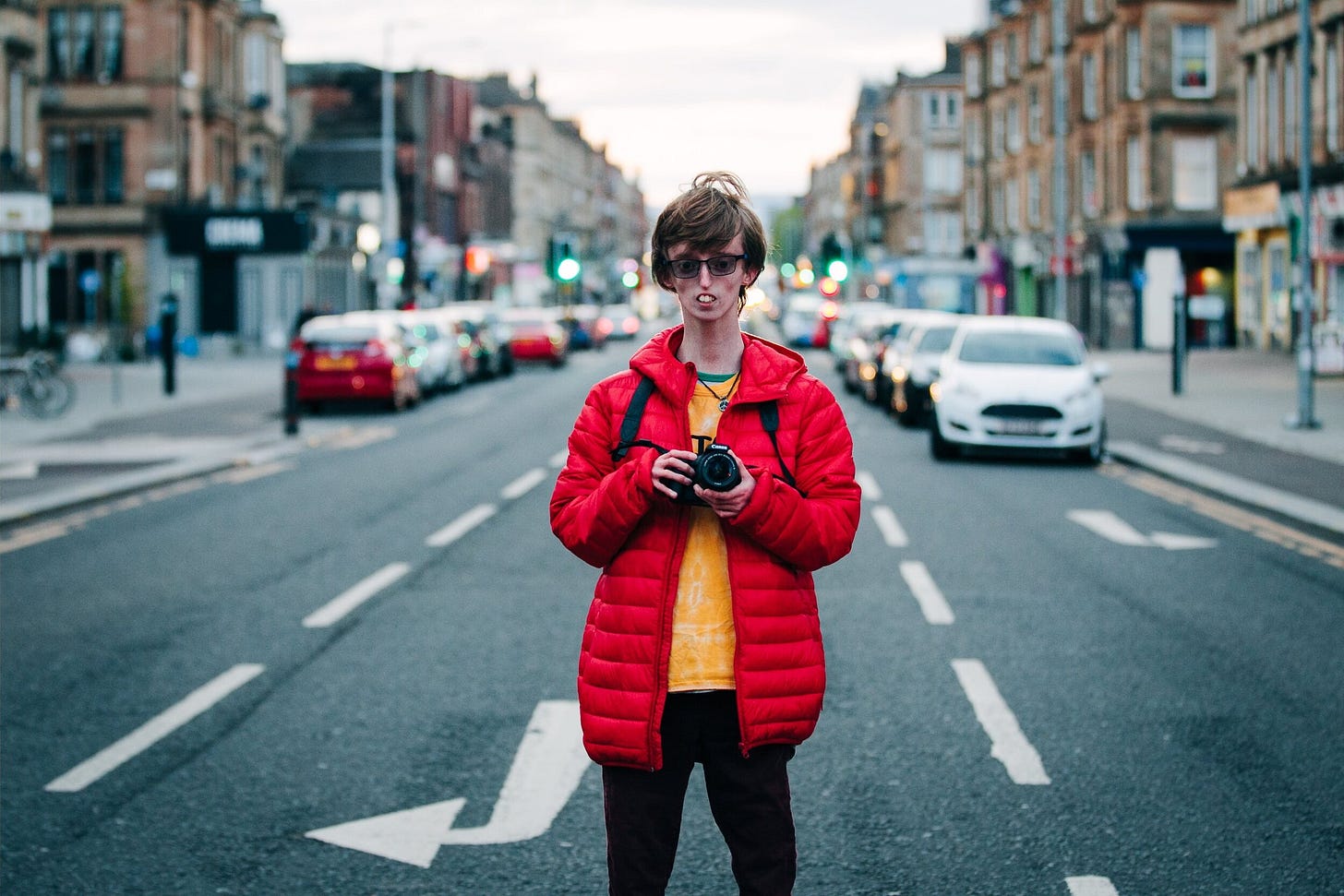
Are there any inspirations who are not in Glasgow?
There's a photographer from America called Chris Burkhard. He takes landscape photography and he inspired me to get out and explore nature.
And the final one?
The final one is Sean Tucker. You might know him.
No, I'm discovering new people!
He shoots light and shadow. He's always trying to capture different ways to experiment with light. He talks about what it’s like being a photographer. He tells people that the most important thing is to keep experimenting and to keep practising.
Thank you, Dylan.
Follow Dylan on Instagram and check out his website.
Read More
The photographs in this article are used for criticism and review under the Fair Dealing provision of UK Copyright Law. All rights to the image remain with the photographer/copyright holder. This use does not claim any rights to the original work and is not for commercial purposes.




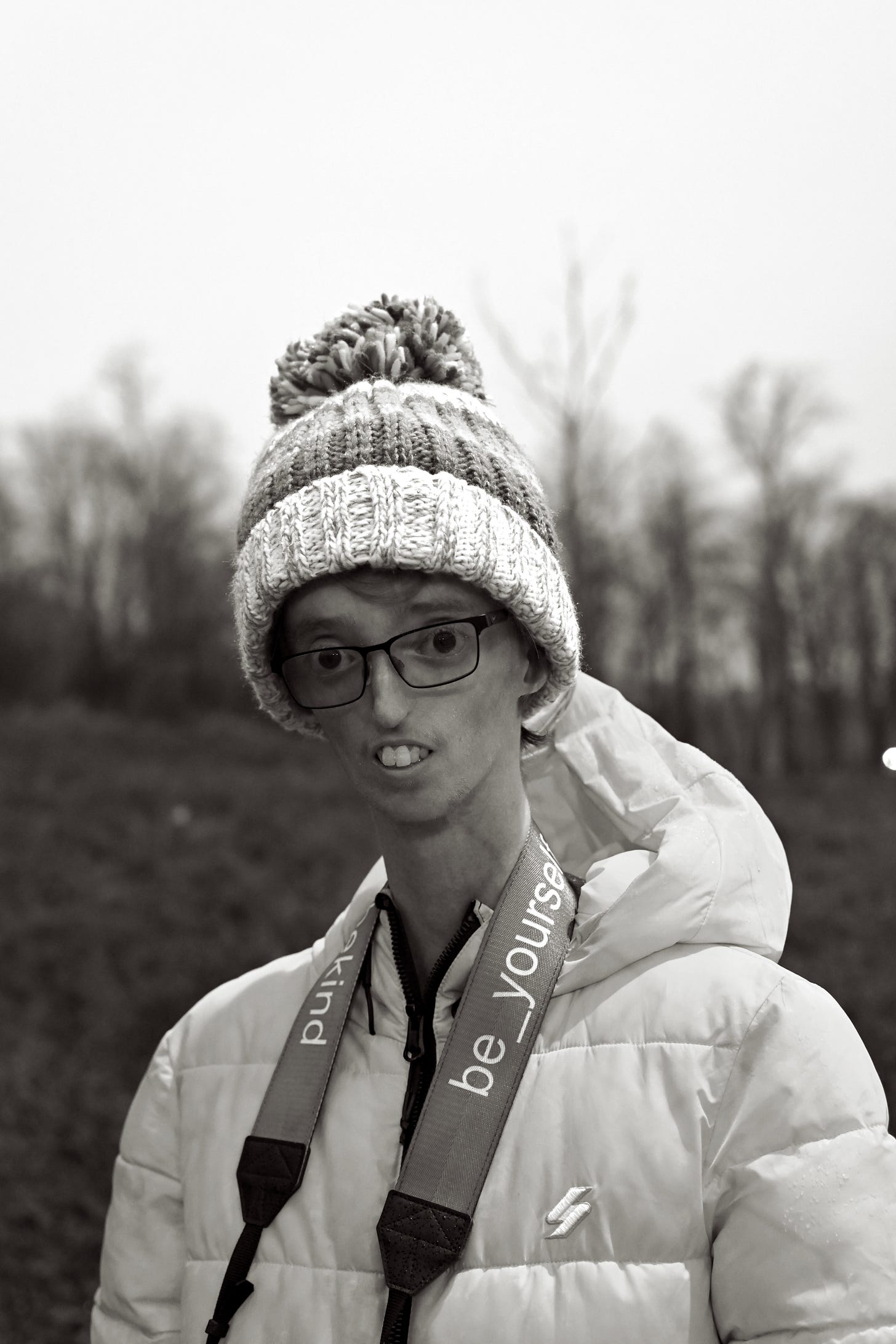
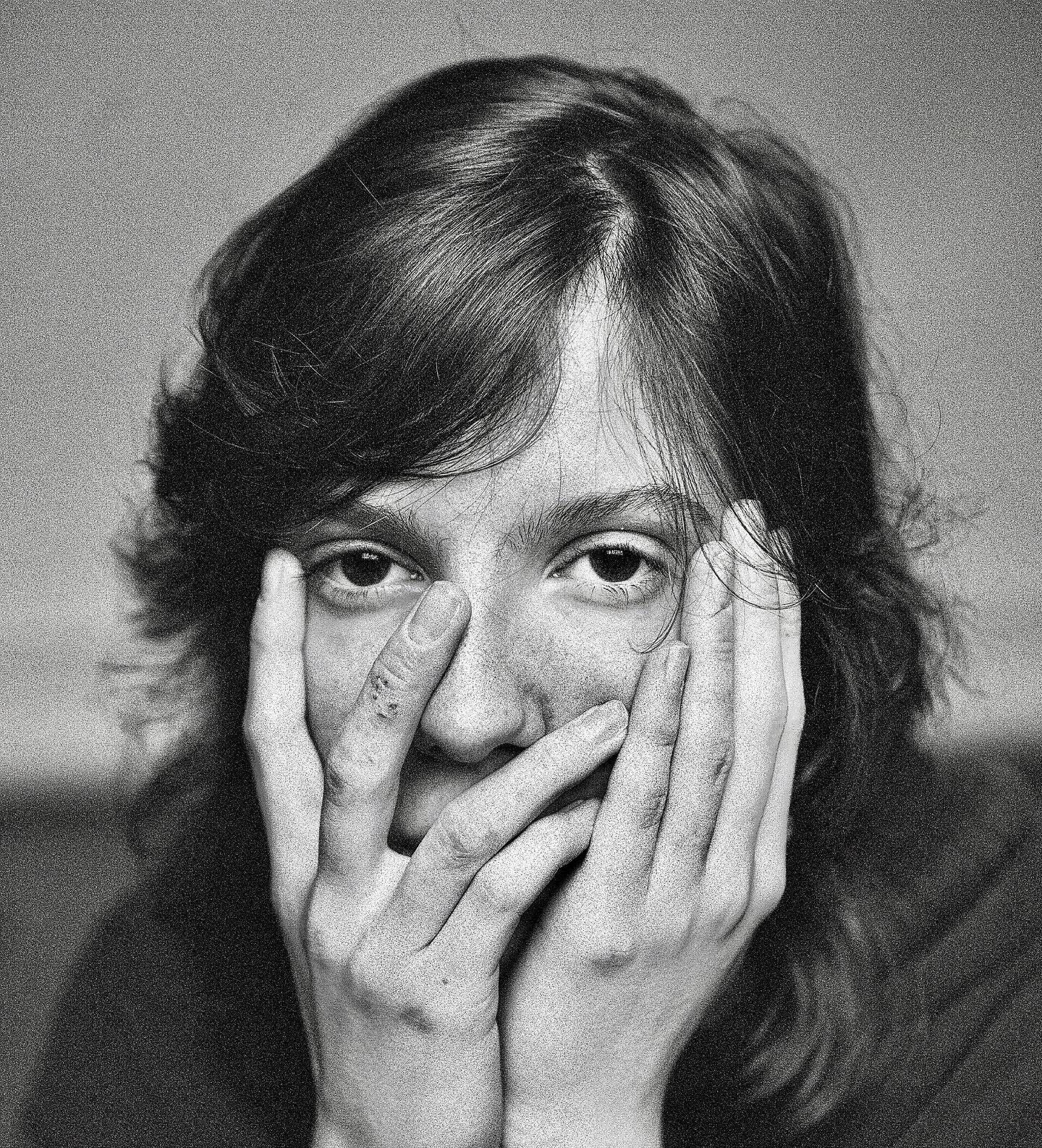
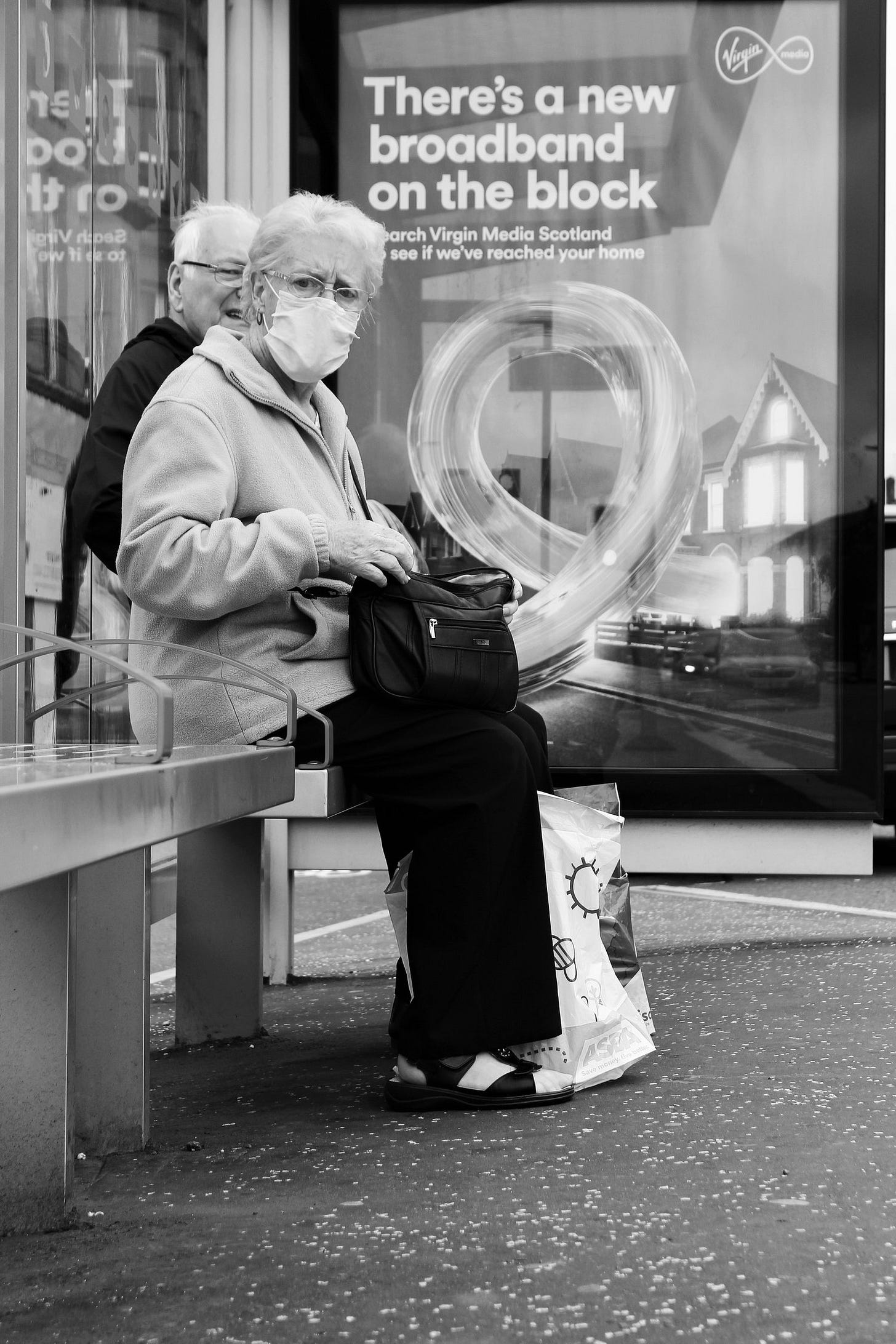



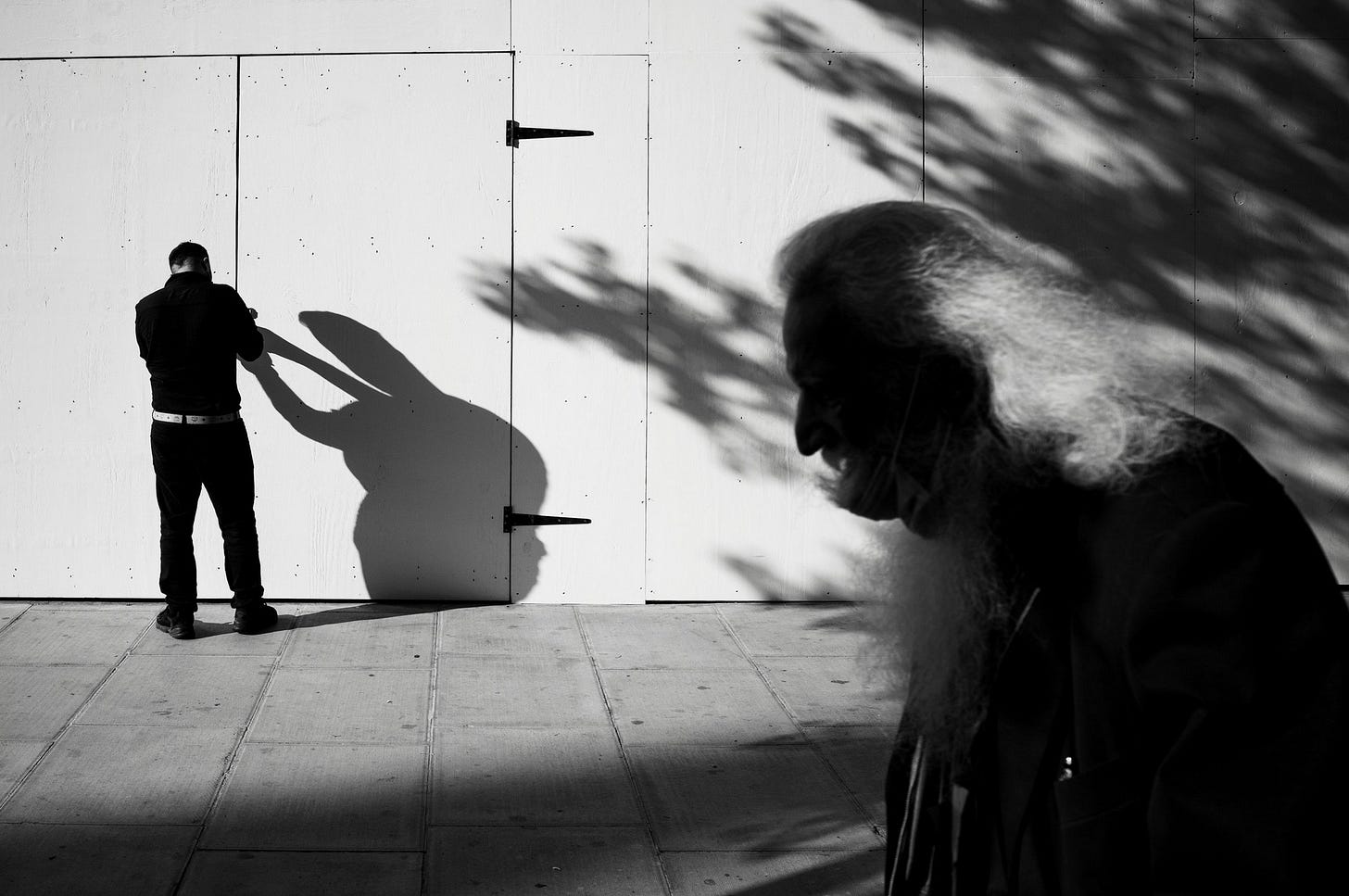
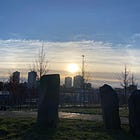

Wonderful interview Neil and fantastic photographs Dylan!